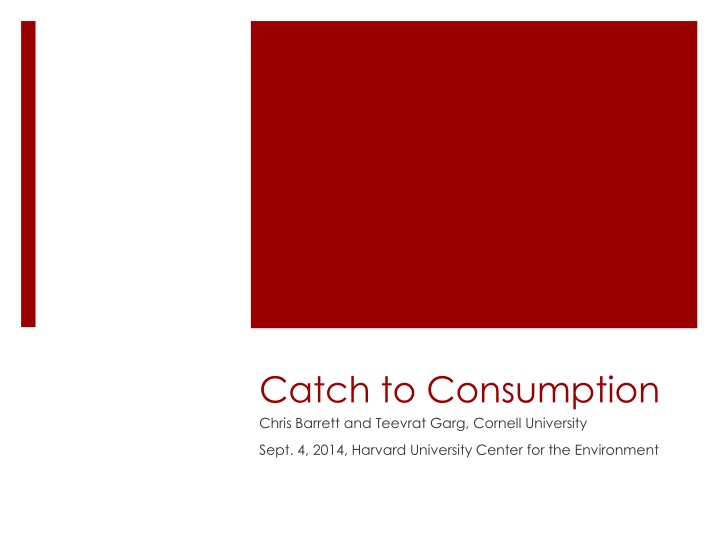
Dynamic Model for Analyzing Food Consumption Shifts
Utilize an existing model to analyze the impact of climate drivers on wildlife populations and human food consumption behaviors. Estimate shocks to fish stocks and simulate global outcomes to identify vulnerable areas to food consumption changes. Explore elasticity estimates and household responses to production shocks.
Download Presentation

Please find below an Image/Link to download the presentation.
The content on the website is provided AS IS for your information and personal use only. It may not be sold, licensed, or shared on other websites without obtaining consent from the author. If you encounter any issues during the download, it is possible that the publisher has removed the file from their server.
You are allowed to download the files provided on this website for personal or commercial use, subject to the condition that they are used lawfully. All files are the property of their respective owners.
The content on the website is provided AS IS for your information and personal use only. It may not be sold, licensed, or shared on other websites without obtaining consent from the author.
E N D
Presentation Transcript
Catch to Consumption Chris Barrett and Teevrat Garg, Cornell University Sept. 4, 2014, Harvard University Center for the Environment
Outline Adapt an existing model that couples exogenous climate drivers, wildlife population dynamics and endogenous human food consumption and resource use behaviors [Barrett & Arcese, 1998] Use own-, cross-price and income elasticity of demand estimates and budget shares from existing literature and secondary dietary data to estimate shocks to fish stock on consumption, labor effort, etc. Simulate on a global scale to identify places most vulnerable to major food consumption shifts and malnutrition in response to shocks to fish stocks or other shocks (e.g., crop productivity, prices, jobs)
Barrett & Arcese (1998 LE) Dynamic model of farmer effort allocation coupled to wildlife population dynamics and exogenous weather shocks Endogenous, time-varying demand for game meat, farm foods, non-food goods, and leisure, labor allocation between poaching and farming Simulate w/ and w/o trade Simulate time to crisis Adapt to fisheries and global scale for spatiotemporally specific behavioral and nutrient intake response
Elasticity Estimates Elasticity = % change in outcome variable in response to 1% change in independent variable How will prices react to a production shock? How will incomes respond to a production shock? How will households respond to price and income changes? Change in consumption of good experiencing supply shock? Indirect income/cross-price effects on other goods? What behavioral responses might feed back on supporting resource base and subsequent periods food supplies?
